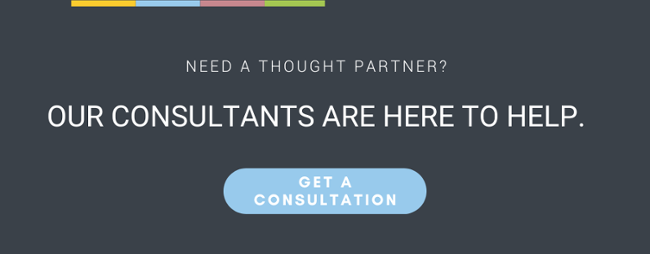In the ever-evolving landscape of education, implementing initiatives can make all the difference between thriving and merely surviving. The art of implementing initiatives well is a skill that requires a combination of strategy, systems, and responsive leadership. Whether you're a district leader, a campus administrator, or a classroom teacher, mastering this art is essential for achieving your goals and driving positive change within your learning community.
In this blog post, Amy Creeden, Superintendent of Schools for the Enlarged City School District of Middletown, about 65 miles northwest of New York City in Middletown, New York, shares three lessons her district learned through the first year of implementing their five-year strategic plan.
Lesson #1: We must be clearer with implementation expectations and teaming.
What We Hoped: To provide an opportunity for campus administrators to have a seat at the district table to practice district-level decision-making so they see the interconnectedness of every decision.
What We Tried: As a district with a small central office team, we used the MOCHA project management method to distribute leadership to include various administrators from all levels of the organization. Some administrators played the role of Owners, while others served as Consultants and Helpers.
What We Learned: We learned that this supported leaders across the district in growing to be responsive, connected, and agile. They became stronger at seeing both the big-picture focus of the district and leaning into the finer details of implementing within their buildings.
We also learned that we needed to be more clear on roles and responsibilities across the different levels of the MOCHA method. The Managers and Approvers were the Superintendent and District Cabinet Members, so those accountabilities were clear, and the team was aligned. The expectations became clearer as the administrators selected as Owners engaged in this work over time. Because the roles and responsibilities of the Consultants and Helpers were undefined when selected, those individuals, at times, the Owners were not always as strategic with who was being selected, which impacted what the priority team was focusing their time and energy on when they came together to progress monitor, affecting the impact of our work at times.
As a Cabinet Team, we practiced Defining the work before the people. In retrospect, we could’ve done a better job helping the Owners use that same practice so that the Consultants and Helpers they selected were because of their proximity and experience to the specific priority focus area and not solely based on position within the district.
What We Are Doing Now:
- More clearly defining roles and responsibilities of the MOCHAS and having more involvement in the selection of those individuals
- Launching Campus Legacy Plans to ensure interconnectedness of district priorities and campus-level goals informed data
- Leveraging Practice Profiles to support fidelity expectations of how priority teams, admin teams, and educators are contributing to the success of the district priorities for the 23-24 SY
Lesson #2: Don't assume what scholars need to feel most supported.
What We Hoped: Scholars would be ignited by the Strategic Plan and feel their voices were valued, and they have the power to shape the District’s vision for the future.
What We Tried: Our district wanted to do more than conduct focus groups with students to learn about their experiences. In addition to our district’s Culture and Climate Survey and focus groups, the district invited four scholars to serve on the Steering Team during our strategic planning process. This intentional action gave scholars both a voice and a vote when determining the priorities and strategic direction of the district. These scholars worked alongside approximately 20 other district leaders, campus administrators, teachers, and community and family members.
What We Learned: By including those four scholars in the process, they could develop critical thinking and communication skills and strengthen their sense of belonging and connectedness to their education, but this wasn’t enough. This action didn’t create the sense of belonging among the scholars we hoped for. If scholars are truly going to feel like they have the power to shape the District’s vision for the future, there must be a more robust system to get input from the broader scholar body.
For the adults who served on the Steering Team, we also learned that working alongside scholars was a constant reminder of our “Why” for embarking on the collaborative planning process of creating our district’s five-year strategic plan.
What We Are Doing Now:
- During the 23-24 school year, the district is not waiting to amplify the level of student input and feedback by launching a student perception survey that will be instrumental in amplifying scholar perceptions.
- The survey data will inform the district's strategies and systems to strengthen how educators reflect on their practice, how administrators support their educators, invest in staff and resources, and how every scholar can contribute to shaping the district's legacy.

Lesson #3: Don't let others tell your district's story.
What We Hoped: Utilize a Culture and Climate survey to engage the school community and better understand the scholar/family experience.
What We Tried: Leveraging a Culture and Climate survey to increase the opportunity for our entire learning community: scholars, families, community members, and district educators and staff, to share how the district is performing relative to their experiences and build meaningful programs and supports more closely aligned to needs of the learning community.
What We Learned: The results from the first administration of the Culture and Climate survey during the 2021-2022 school year were pivotal for informing district priorities outlined in the strategic plan. Survey engagement was much lower after the second administration, which made it difficult for priority teams to be responsive and measure the impact of the actions related to the priorities.
There was a lack of strategy to ensure that the learning community was aware of the logistics of completing the survey and the importance and value it provides to the district to make decisions that reflect their needs.
What We Are Doing Now:
- This year, one of the district’s communication team’s promotional campaigns will be focused on increasing the number of participants in the Culture and Climate survey.
- The Communication team will be working with a subject-matter expert (Documentarian and Columbia University Professor) to help develop the skills and practices of the department.
The Art of Implementing Well is meant to guide the thoughtful implementation of a program or initiative at scale. The components are based on research and our experience supporting more than 400 implementations, ranging from small districts to large complex ones. If you are starting from the beginning with implementation, you should start with creating an intentional strategy that will drive the creation of aligned systems. If you find yourself mid-implementation, use this as a guide to identify the strengths and gaps in your current approach.
Remember that initiative implementation is not a one-size-fits-all endeavor; it's a dynamic process that requires adaptability, resilience, and continuous learning. Embrace the challenges, stay committed to your goals, and foster a culture of innovation and collaboration within your team. With dedication and the right mindset, you can become a master of the art of implementing initiatives well, driving your organization toward a legacy you helped shape.
.png)





